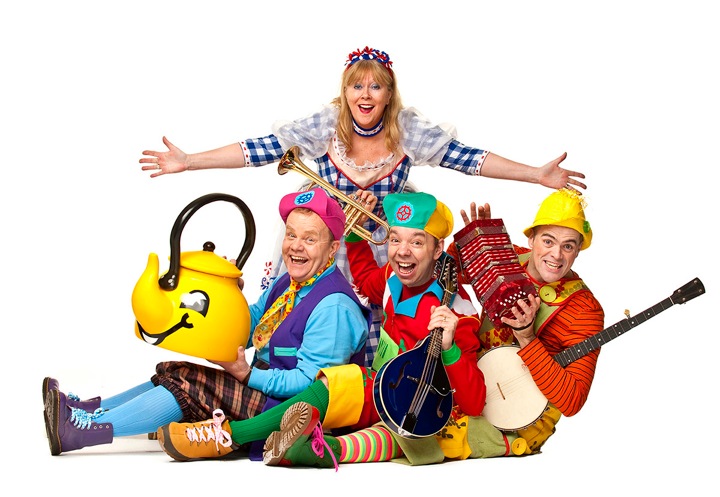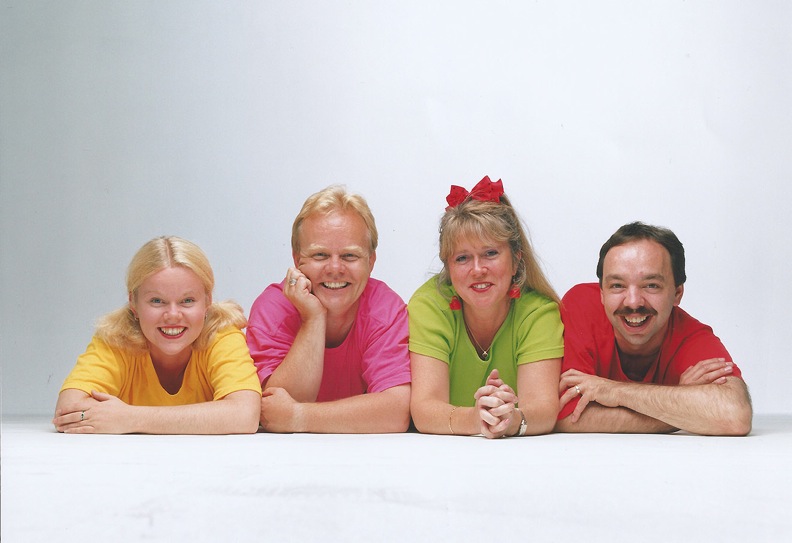 LOUNGING on the beach in Bermuda, where they had stopped off on the way home from an American tour in October 1979, Artie Trezise and Cilla Fisher, at that time an award-winning traditional singing duo, were asked to sing in a local school. They had seen folk singers performing for children in the United States and Cilla in particular had a large repertoire of children’s songs so they agreed.
LOUNGING on the beach in Bermuda, where they had stopped off on the way home from an American tour in October 1979, Artie Trezise and Cilla Fisher, at that time an award-winning traditional singing duo, were asked to sing in a local school. They had seen folk singers performing for children in the United States and Cilla in particular had a large repertoire of children’s songs so they agreed.
They had no idea that this first foray into children’s entertainment would lead to a three-decade family show that would sell hundreds of thousands of albums and DVDs, chalk up box office records, play London’s West End and venues as far flung as Hong Kong and Australia (not to mention the Royal Palace in Jordan), and ultimately see its founders recognised with an MBE for services to children’s entertainment.
Back at the end of the Seventies, however, the husband and wife duo’s initial venture into family entertainment was a tentative one. They had made recordings with serious folk labels such as Topic, Trailer and Folk Legacy in America, one of which had been the Melody Maker folk album of the year. “We had a good track record as folk singers,” Trezise recalls. When they were asked to do that classroom gig in Bermuda, however, they had quite a store of childrens’ songs from which to draw. Cilla in particular possessed a vast store, coming from Glasgow’s renowned Fisher family that was a stopping off place for any visiting singers. She had been singing them on stage from an early age – not least for one of Charles Parker and Ewan McColl’s’s Radio Ballads for the BBC.
The success of that first classroom gig made them think, however, and the Singing Kettle came into being, named after the Fife village of Kingskettle where they lived (the village, stresses Trezise, was not named after them, as some fans seemed to think). Responding partly to a dearth of Scottish-orientated children’s entertainment, they released their first, eponymously titled album in 1982 and within two months it had outsold anything else the pair had recorded as “serious” folk singers.
Initially they played schools and playgroups while maintaining their folk singing careers. “We knew people wanted it and we enjoyed doing it,” says Trezise, “but we still felt that we were serious folk singers, so we just did the Singing Kettle when it suited us.
“Then we had a second child and it wasn’t so easy to travel, so, rather ironically, we started doing the Singing Kettle to get off the road, but in fact ended up on the road even more because it proved so popular.”
Another boost came shortly after they’d released that first album (another 48 would follow), when Cilla was sitting in for Jimmie Macgregor on his popular weekday Radio Scotland show. The producer suggested that they theme the week’s programmes on children’s songs and lore, as she recalls: “So I played The Train to Glasgow and apparently it got the biggest response to anything they’d played on the show.”
In 1985 the couple saw an advert placed in The Scotsman by multi-instrumentalist Gary Coupland, who was looking for work. Eventually they got in touch with him, he came to see them in Fife on a Thursday and on the Saturday they played their first Singing Kettle gig together, in Dalkeith Library. Gary would become the musical mainstay of the show, while Cilla wrote more and more songs as they used up their store of traditional children’s material.
The signature chant they developed – “Spout, handle, lid of metal, what’s inside the singing kettle?” would be sung an estimated 40,000 times during their live shows over more than 30 years. Their TV series on both BBC and STV won them a BAFTA, while their increasingly colourful and inventive stage shows would take them to London’s West End, where audiences at the London Palladium or Sadler’s Wells would inevitably turn out to be heavily laden with ex-pat Scots. As their reputation spread – and they’ve always stressed that they regarded themselves as a family show, rather than just a children’s show, they played to ecstatically receptive audiences in Australia, Hong Kong and even, by invitation, at the Royal Palace in Jordan, where a nanny from South Queensferry had recommended them for Princess Salma’s birthday party.
They performed at the Smithsonian’s Folklife Festival in the National Mall in Washington DC and recorded an album for the Smithsonian’s Folkways label. Back at home they set box office records at the Glasgow Royal Concert Hall, selling out 30 shows, while at the SECC they also held a box office record that was finally topped by one Pavarotti. In 2000 Trezise, Fisher and Coupland were awarded the MBE or services to children’s entertainment, at the time the only music group since the Beatles to figure on the honours list.
The live Kettle experience, bolstered by a young audience (and their parents) yelling at the top of their voices, was not easily forgotten, as this writer can testify from taking his own children to see the show in Portobello Town Hall. Trezise recalls one open-air concert they gave at the Ross Bandstand in Edinburgh’s Princes Street Gardens when they asked children to bring along such makeshift percussion as pots and pans. “The council guy came along with his noise meter and it went off the scale.”
Among their more unusual venues was one in a hangar at Barrow-in-Furness, Lancashire, before an audience of 2,000, to mark the launch of the UK’s largest submarine.
They were joined for seven years by Artie and Cilla’s daughter, Jane, then, when she pursued a musical career elsewhere, their stage manager, Kevin Macleod, who had been doing bit parts in the shows, joined them as a fully-fledged Kettle member.
In early 2013, Trezise and Fisher decided to call it a day and the remaining team was joined by Anya Scott-Rogers – the only performer who had come to the show as a child and returned as an adult cast member.
Some five million audience members on from those first tentative children’s shows, the final performance of the Singing Kettle was in Aberdeen music Hall in February 2015, although Coupland, Macleod and Scott-Rogers continue in the Kettle spirit with their own family show, Fun Box.
Written by Jim Gilchrist 2015

